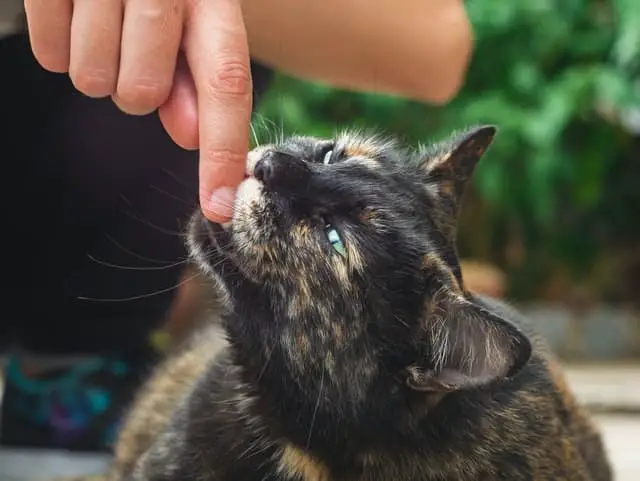
Biting is part of the nature of cats due to their hunting instinct. However, this behaviour can be molded, especially at an early age to prevent it from becoming a major problem for the pet’s coexistence with its owners.
If you feel that your feline is making you lose your mind with a very biting behaviour, you should read this publication to the end because we will tell you how to train a cat not to bite.
Reasons why a cat bites
Before going into the subject of how to train a cat not to bite, it is important that you understand what causes this behaviour in your pet and that is why we will show you the main causes.
- An inappropriate period of socialization:
The first weeks of a cat’s life are very important for its socialization. Everything that the cat lives in that period of time will mark its character as an adult. That is why when the cat is a baby it is necessary to make sure that it spends enough time with its mother and that it also has contact with humans to avoid future fears and insecurities towards people.
- Poor adaptation to new environments:
When the cat is moved, it is necessary that the whole process be somewhat progressive so that the animal gradually becomes familiar with the new environment and understands that there is no threat in that place. If all the changes are made abruptly and suddenly, insecurities and fears can appear in the cat’s mind that will accompany it into adulthood and cause negative reactions.
- Traumatic experiences:
If a cat has lived experiences that have negatively affected its life, it is likely to suffer from behavioral changes, such as being a compulsive biter. To help the pet in these cases it is necessary to treat the trauma with a feline ethologist.
- Diseases:
There are diseases in cats that can trigger aggressive behaviors such as feline immunodeficiency virus or hyperthyroidism. In these cases it is necessary to visit the vet for proper treatment.
- Aggression per game:
Unlike all the previous cases, this aggressiveness occurs when the cat is playing with its owners or when it wants to invite them to play with it. This behavior is normal, however it does not have to be accepted, because the cat must be taught that it is not necessary to be aggressive to play.
Check out these 5 methods to train a cat not to bite

We want you to learn how to train a cat so that it does not bite and can solve the problem you have at home with your feline and that is why we will give you 5 different solutions so that you can apply the ones that best suit the situation you are living with your furry .
1. Divert their energies to the right toys:
When a cat wants to play and is very excited it may want to scratch and bite your hands or feet, but it is important that you teach your feline that it can only do that with toys, because as the cat grows its teeth can make you hurt. When your cat wants to jump to bite your ankles you have to stay still so that the cat can see that it has not achieved its goal which is to play with you and you must throw a toy like a ball at it so that you divert its energy towards the toy.
2. Use your voice to stop this behaviour:
Whenever your cat approaches you to bite you, you should immediately say “No” with an imposing attitude and ignore it as you go your way. If you do that every time your cat wants to attack you, you will send him the message that what he does is not pleasant for you.
3. Play with your cat to bond:
To train a cat not to bite it is important that you play with your pet between 5 and 15 with each day. This will ensure that the affectionate bond between you is maintained. In addition, the game will help you educate them, because every time it tries to bite you, you can stop the game and wait a few minutes to return, so that the cat understands that the fun ends if it attacks you.
4. Take your cat to the vet to check that it is healthy:
If your cat is sick or in pain, it may always be on the defensive and the likelihood of its attacking humans will increase. Therefore, it is important that you take your pet to the vet so that the professional can rule out any health problems.
5. Give your cat a calm environment:
If your cat is stressed or anxious, it will be more likely to bite or scratch humans. To avoid this you have to make sure that the cat has everything it needs at home to lead a comfortable and healthy life. It must have easy access to its food, its litter box and scrapers. As it must also have a place to climb from time to time and a quiet space to sleep.






